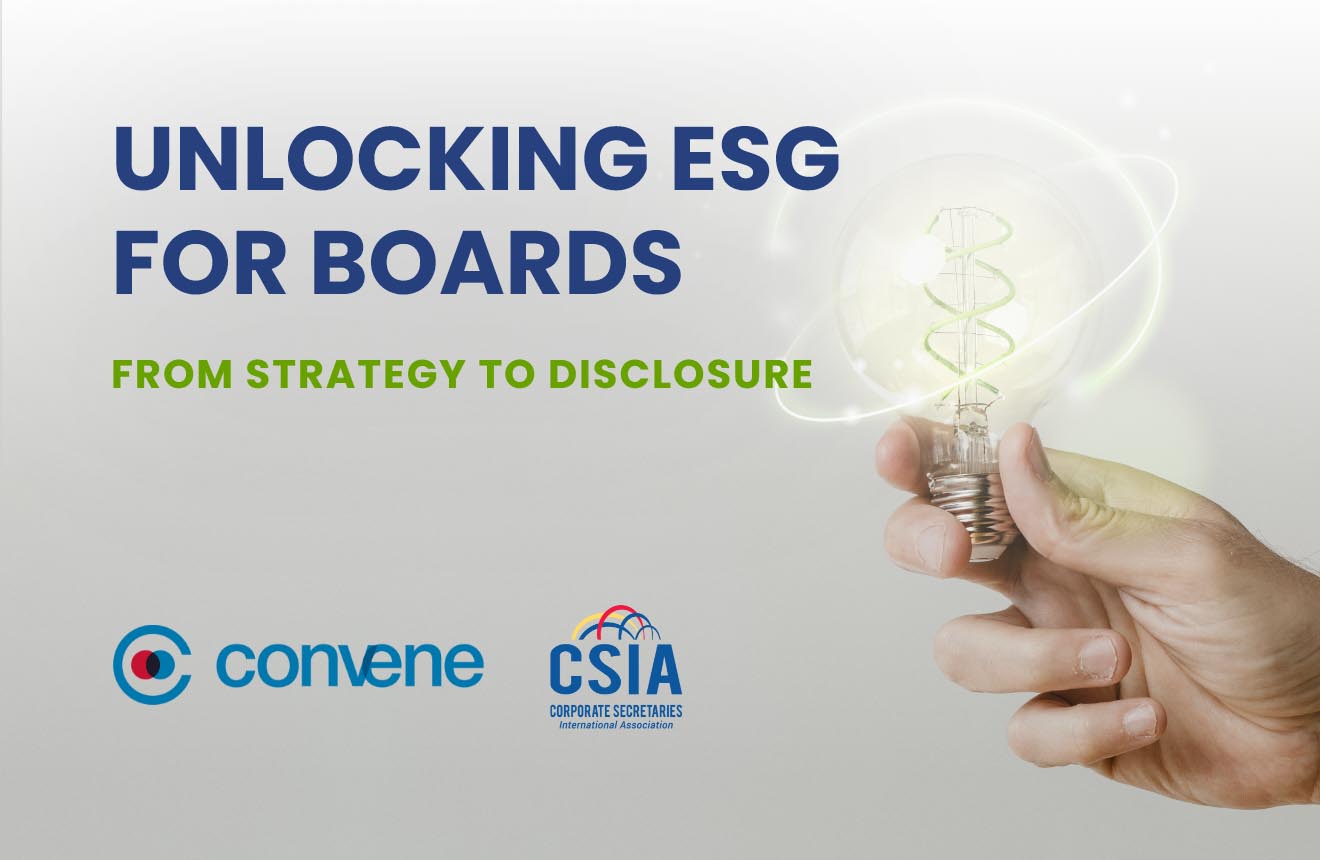In guiding a company to success, executives and leaders must anticipate what the public and other stakeholders want to see in the organizations they invest in. Recent years have shown environmental, social, and governance (ESG) reporting to be a leading priority. An ESG study found that 59% of global investors require emissions data, analysis, and reports to assist in net zero investing.
In order to build a truly sustainable company, boards must establish a viable corporate ESG strategy. It must facilitate the enhancement of positive impacts on people, the environment, and profits alike, with plenty of room for growth and adaptation. Here’s everything you need to know about ESG strategy development.
What is an ESG Strategy?
An ESG strategy is a business model which takes the welfare of individuals, populations, and the planet into account on an equal footing with financial viability and profits. In other words, such a strategy is often built around what author John Elkington called a “triple bottom line,” one focused on people, the planet, and profitability.
Simple ESG compliance involves disclosing information requested by major reporting standards. An ESG strategy, on the other hand, is based on an assessment of an organisation’s sustainability performance. This includes identifying productive steps and tactics which can help companies establish, meet, and exceed ESG goals.
The Benefits of Creating an ESG Strategy
Among investors and the wider public, there is widespread interest in seeing companies implement a greater number of comprehensive sustainability practices because it’s the right and ethical thing to do. While this informs much of the thinking behind the corporate interest in the same topic, there are several other advantages firms can expect when adopting a corporate ESG strategy.
To begin with, that same widespread public interest in ESG means companies can attract more investment, improve their public image, and remain competitive. Similarly, adopting an ESG strategy will show stakeholders that their needs and interests are at the heart of a company’s vision for governance. Such a strategy will also improve transparency, giving investors and the public vital insight into your company’s efforts to establish and meet key sustainability goals.
Finally, an effective ESG strategy will prepare your company for long-term success and growth. Establishing sustainable practices and building a public-facing image off of that effort will reinforce investor confidence. It will also prepare your organisation to meet future challenges in order to guarantee stability and prosperity in years to come.
How to Develop an ESG Strategy
Your chosen ESG reporting framework, measurable steps taken to achieve your goals, and the outcomes of those steps should inform the nature and content of your strategy. Also, consider future efforts to revise it following developments in regulatory and sustainability matters. Here are the steps you should take when formulating your approach.
1. Conduct a Materiality Assessment
A materiality assessment is performed to identify and engage key stakeholders to determine which ESG metrics are most important to them and why. This insight will help you understand how your company currently performs against those interests and areas you should focus on.
2. Establish a Baseline and Assess the Competition
In ESG strategy development, it’s necessary to understand how your organisation performs on ESG matters first. To that end, create a baseline, a detailed portrait of your current ESG goals will show how well you’re meeting them. You can compare this data with your competitors’ performance to determine key actions to take.
3. Choose the Right ESG Framework
Once you have a clear idea of where you are and where you want to be, it’s time to develop an ESG integration strategy. This step involves choosing one or more ESG reporting frameworks, such as the GRI Standards or the TCFD. You will also need to formulate short- and long-term plans comprising key performance indicators (KPIs) and achievable actions to fulfil them.
4. Establish ESG Objectives
Discussions surrounding ESG goals should cover practices you can maintain, adopt, or implement and aspects that could be improved. Determine how you will achieve these goals, measure performance, and discuss timelines. Present the draft goals to key stakeholders to build a broad consensus.
5. Discuss Your ESG Strategy with Stakeholders
At all stages of the planning process, stakeholders should be given insights into and participation in your strategy. Besides conducting materiality assessments, this involves publicising draft goals and methods, reporting on progress, and soliciting input on short- and long-term goals and strategic developments. It may also be beneficial to hold educational sessions for employees to help them develop a deeper knowledge of sustainability in the activities relevant to your company.
6. Monitor Performance and Report on Your Progress
Finally, use an ESG reporting software like Convene ESG to create quarterly or annual performance reports for stakeholders. The first report should outline your strategy along with the steps taken to implement it and achieve the goals laid out in it and overall performance.
Build a Robust ESG Strategy with Convene ESG

Developing an ESG strategy is both a significant challenge for today’s corporate world, as well as one of its most rewarding opportunities. From setting and monitoring sustainability goals to preparing reliable ESG reports conforming to a wide range of leading reporting frameworks, Convene ESG is a comprehensive resource for companies in all sectors and industries.
Learn more about the features included in this ESG reporting software, or book a consultation to discuss how Convene ESG can support your ESG strategy development.
Monica joined the ESG industry as a Sustainability Associate for Business for Sustainable Development (BSD), one of the pioneers of corporate sustainability in the Philippines. There, she was able to deep dive into the field, helping clients in the local market adopt sustainability into their core business through sustainability strategy/roadmap building and report writing. Apart from sustainability, Monica has experience in entrepreneurship, partaking in small businesses since her years in college. She graduated from Ateneo de Manila University with a Bachelor of Arts in Management Economics, and a minor in Sustainability in 2019.














